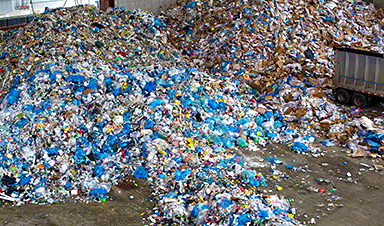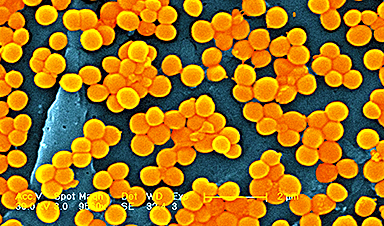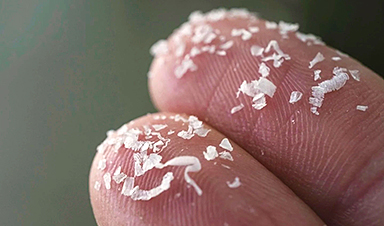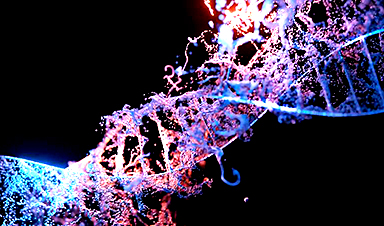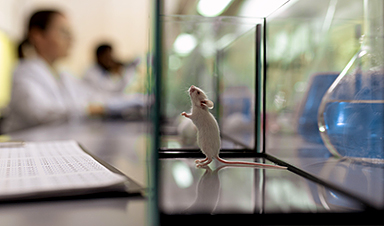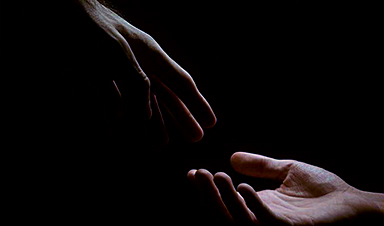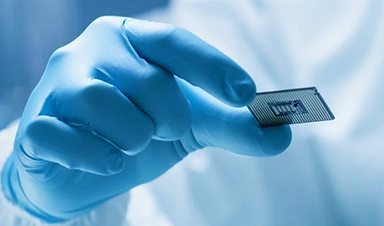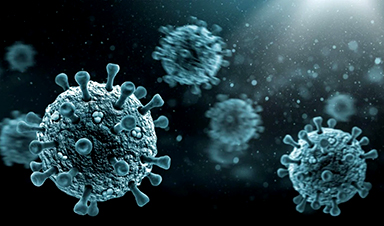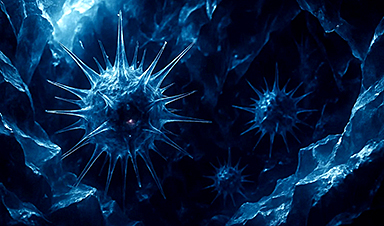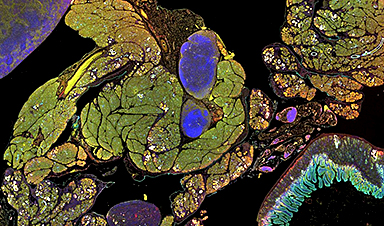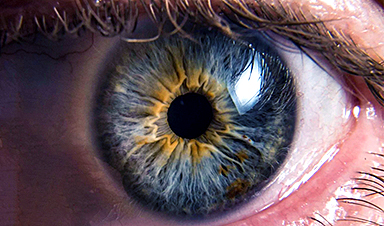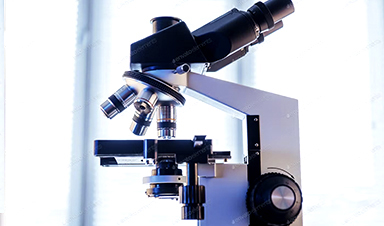| Scientists from Nanyang Technological University, Singapore (NTU Singapore) have created a process that can upcycle most plastics into chemical ingredients useful for energy storage, using light-emitting diodes (LEDs) and a commercially available catalyst, all at room temperature. | |
| The new process is very energy-efficient and can be easily powered by renewable energy in the future, unlike other heat-driven recycling processes like pyrolysis. This innovation overcomes the current challenges in recycling plastics such as polypropylene (PP), polyethylene (PE) and polystyrene (PS), which are typically incinerated or discarded in landfills. Globally, only nine per cent of plastics are recycled, and plastic pollution is growing at an alarming rate. | |
| The biggest challenge of recycling these plastics is their inert carbon-carbon bonds, which are very stable and thus require a significant amount of energy to break. This bond is also the reason why these plastics are resistant to many chemicals and have relatively high melting points. | |
| Currently, the only commercial way to recycle such plastics is through pyrolysis, which has high energy costs and generates large amounts of greenhouse emissions, making it cost-prohibitive given the lower value product of the resulting pyrolysis oil. Developed by Associate Professor Soo Han Sen, an expert in photocatalysis from NTU’s School of Chemistry, Chemical Engineering, and Biotechnology, the new method uses LEDs to activate and break down the inert carbon-carbon bonds in plastics with the help of a commercially available vanadium catalyst. | |
| Published this week in the journal Chem (“Upcycling of non-biodegradable plastics by base metal photocatalysis”), the NTU method can upcycle a range of plastics, including PP, PE and PS. These plastics, together, account for over 75 per cent of global plastic waste. | |
| In developing a green solution to the plastic waste problem, the team wanted to ensure that minimal extra carbon emissions are generated through the recycling of plastics, which are long chains of molecules containing carbon atoms. | |
| Inventor Assoc Prof Soo said: “Our breakthrough not only provides a potential answer to the growing plastic waste problem, but it also reuses the carbon trapped in these plastics instead of releasing it into the atmosphere as greenhouse gases through incineration.” | |
How the plastics are broken down |
|
| First, the plastics are dissolved or dispersed in the organic solvent known as dichloromethane, which is used to disperse the polymer chains so that they will be more accessible to the photocatalyst. The solution is then mixed with the catalyst and flowed through a series of transparent tubes where the LED light is shone on it. | |
| The light provides the initial energy to break the carbon-carbon bonds in a two-step process with the help of the vanadium catalyst. The carbon-hydrogen bonds in the plastics are oxidised – making the bonds less stable and more reactive – after which the carbon-carbon bonds are broken down. | |
| After separation from the solution, the resulting end products are chemical ingredients such as formic acid and benzoic acid, which can be used to make other chemicals employed in fuel cells and liquid organic hydrogen carriers (LOHCs). LOHCs are now being explored by the energy sector as they play critical roles in clean energy development, given their ability to store and transport hydrogen gas more safely. | |
| Unlike current and other emerging technologies to recycle plastics such as pyrolysis, which uses a high-temperature process to melt and degrade the plastics into low-quality fuels, or carbon nanotubes and hydrogen, the new LED-driven method requires much less energy. | |
| Prof Soo adds that their method is unique in that it can use sunlight or LEDs powered with electricity from renewable sources such as solar, wind or geothermal, to completely process and upcycle such a wide range of plastics. This can allow for clean and energy-efficient management of plastics in a circular economy and increase the recycling rate of plastics. | |
| The process may also help Singapore to reduce the amount of plastic waste from being incinerated or landfilled, helping the country to meet its Zero-Waste Masterplan, where it aims to increase the overall recycling rate to 70 per cent by 2030 and reduce waste going to the Semakau landfill, estimated to run out of space by 2035. Singapore generates around 1 million tonnes of plastic waste annually and only six per cent of Singapore’s plastic waste is recycled. | |
| This study is part of a bigger project, entitled SPRUCE: Sustainable Plastics RepUrposing for a Circular Economy, which also involves Professor Xin (Simba) Chang, Associate Dean (Research) from the Nanyang Business School and Associate Professor Md Saidul Islam from the School of Social Sciences. | |
| The interdisciplinary team estimates that if Singapore can upcycle 80 per cent of its plastics, it could lead to at least a 2.1 million tonnes reduction in carbon dioxide emissions – about four per cent of the nation’s total greenhouse gas emissions. In addition, when plastics are upcycled into chemical feedstock, it reduces the need by the chemical industry to combust fossil fuels to produce chemical feedstock, further cutting down greenhouse gas emissions. | |
| Based on the estimations by Prof Chang and other team members, the economic benefit of reducing carbon dioxide emissions is estimated to be S$41.40m per year while the estimated cost savings from avoiding landfill use is about S$41.35 million per year in Singapore. Plastic reuse and recycling are projected to generate a profitpool growth of as much as US$60 billion for the chemical industry globally. | |
| Prof Chang, an expert in corporate finance, added, “Given that Singapore’s chemical industry accounts for about one-third of the manufacturing output in 2015, the integration of plastic upcycling technology into the industry has the potential to yield considerable positive economic and environmental impact.” | |
| Sociology expert Assoc Prof Islam said: “This innovative approach — by transforming plastic waste into valuable resources like formic acid — not only reduces the burden of plastic pollution but also addresses the growing demand for sustainable chemicals. This contributes to a cleaner environment, enhances public health, and creates new employment opportunities, especially in research, development, and production sectors, thereby fostering economic growth with a shift towards circular economies.” |
News
How the FDA opens the door to risky chemicals in America’s food supply
Lining the shelves of American supermarkets are food products with chemicals linked to health concerns. To a great extent, the FDA allows food companies to determine for themselves whether their ingredients and additives are [...]
Superbug crisis could get worse, killing nearly 40 million people by 2050
The number of lives lost around the world due to infections that are resistant to the medications intended to treat them could increase nearly 70% by 2050, a new study projects, further showing the [...]
How Can Nanomaterials Be Programmed for Different Applications?
Nanomaterials are no longer just small—they are becoming smart. Across fields like medicine, electronics, energy, and materials science, researchers are now programming nanomaterials to behave in intentional, responsive ways. These advanced materials are designed [...]
Microplastics Are Invading Our Arteries, and It Could Be Increasing Your Risk of Stroke
Higher levels of micronanoplastics were found in carotid artery plaque, especially in people with stroke symptoms, suggesting a potential new risk factor. People with plaque buildup in the arteries of their neck have been [...]
Gene-editing therapy shows early success in fighting advanced gastrointestinal cancers
Researchers at the University of Minnesota have completed a first-in-human clinical trial testing a CRISPR/Cas9 gene-editing technique to help the immune system fight advanced gastrointestinal (GI) cancers. The results, recently published in The Lancet Oncology, show encouraging [...]
Engineered extracellular vesicles facilitate delivery of advanced medicines
Graphic abstract of the development of VEDIC and VFIC systems for high efficiency intracellular protein delivery in vitro and in vivo. Credit: Nature Communications (2025). DOI: 10.1038/s41467-025-59377-y. https://www.nature.com/articles/s41467-025-59377-y Researchers at Karolinska Institutet have developed a technique [...]
Brain-computer interface allows paralyzed users to customize their sense of touch
University of Pittsburgh School of Medicine scientists are one step closer to developing a brain-computer interface, or BCI, that allows people with tetraplegia to restore their lost sense of touch. While exploring a digitally [...]
Scientists Flip a Gut Virus “Kill Switch” – Expose a Hidden Threat in Antibiotic Treatment
Scientists have long known that bacteriophages, viruses that infect bacteria, live in our gut, but exactly what they do has remained elusive. Researchers developed a clever mouse model that can temporarily eliminate these phages [...]
Enhanced Antibacterial Polylactic Acid-Curcumin Nanofibers for Wound Dressing
Background Wound healing is a complex physiological process that can be compromised by infection and impaired tissue regeneration. Conventional dressings, typically made from natural fibers such as cotton or linen, offer limited functionality. Nanofiber [...]
Global Nanomaterial Regulation: A Country-by-Country Comparison
Nanomaterials are materials with at least one dimension smaller than 100 nanometres (about 100,000 times thinner than a human hair). Because of their tiny size, they have unique properties that can be useful in [...]
Pandemic Potential: Scientists Discover 3 Hotspots of Deadly Emerging Disease in the US
Virginia Tech researchers discovered six new rodent carriers of hantavirus and identified U.S. hotspots, highlighting the virus’s adaptability and the impact of climate and ecology on its spread. Hantavirus recently drew public attention following reports [...]
Studies detail high rates of long COVID among healthcare, dental workers
Researchers have estimated approximately 8% of Americas have ever experienced long COVID, or lasting symptoms, following an acute COVID-19 infection. Now two recent international studies suggest that the percentage is much higher among healthcare workers [...]
Melting Arctic Ice May Unleash Ancient Deadly Diseases, Scientists Warn
Melting Arctic ice increases human and animal interactions, raising the risk of infectious disease spread. Researchers urge early intervention and surveillance. Climate change is opening new pathways for the spread of infectious diseases such [...]
Scientists May Have Found a Secret Weapon To Stop Pancreatic Cancer Before It Starts
Researchers at Cold Spring Harbor Laboratory have found that blocking the FGFR2 and EGFR genes can stop early-stage pancreatic cancer from progressing, offering a promising path toward prevention. Pancreatic cancer is expected to become [...]
Breakthrough Drug Restores Vision: Researchers Successfully Reverse Retinal Damage
Blocking the PROX1 protein allowed KAIST researchers to regenerate damaged retinas and restore vision in mice. Vision is one of the most important human senses, yet more than 300 million people around the world are at [...]
Differentiating cancerous and healthy cells through motion analysis
Researchers from Tokyo Metropolitan University have found that the motion of unlabeled cells can be used to tell whether they are cancerous or healthy. They observed malignant fibrosarcoma [...]
